Elephants are magnificent creatures that have played an enormous role in conserving and protecting our ecosystem. Since most elephants look similar, it can be difficult to tell different types of elephants a part.
Currently, there are three species of elephants worldwide. The African Savanna (Bush) and African Forest elephants reside in Africa. Whereas the third species of elephant, the Asian elephant, is found in Asia. It has three subspecies. These are the Indian, Sumatran, and Sri Lankan elephants. The Borneo elephant has been suggested as a 4th subspecies.
With the increasing awareness of elephant endangerment, it should be noted where elephants live natively and the different types of elephants there are to save them.
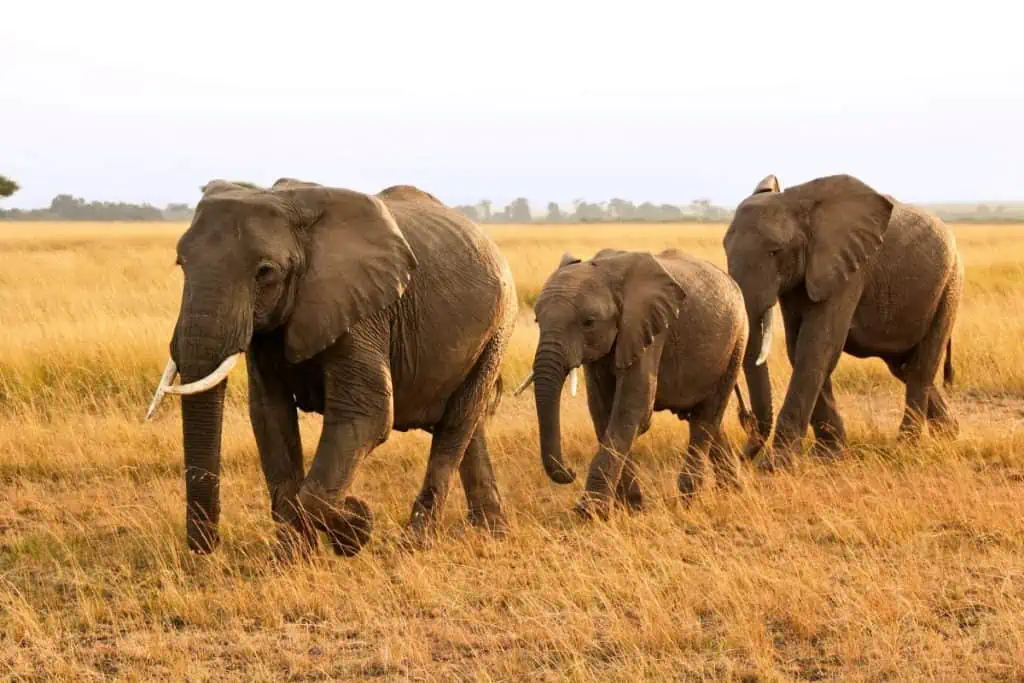
Different Elephants Around the Globe
The African Forest, African Savanna (Bush), and Asian elephants are the three types of elephants around the globe.
In the Asian species, there are three main subspecies, namely the Indian, Sumatran, and Sri Lankan elephants.
A fourth subspecies, the Borneo Elephant, is also included in Asian elephants, but its population is quite small.
Let’s look at each of them:
1. African Forest Elephant
The African forest elephants are different from their African counterparts. These elephants are usually found in the dense forests of Central and West Africa.
The African forest elephants are smaller in size compared to savanna elephants. They reach an approximate height of 8 feet and can weigh up to 4 tonnes.
Their main distinguishable characteristic is their color which is reddish-brown to brownish-gray. In addition, their tusks are straighter and point directly downward.
The African forest elephants are classified as critically endangered because their population is only 40,000-50,000 individuals in the wild.
Gabon hosts the largest population of African forest elephants. The Mayumba National Park in Gabon is an excellent place for people to look at the wonder that African forest elephants are.
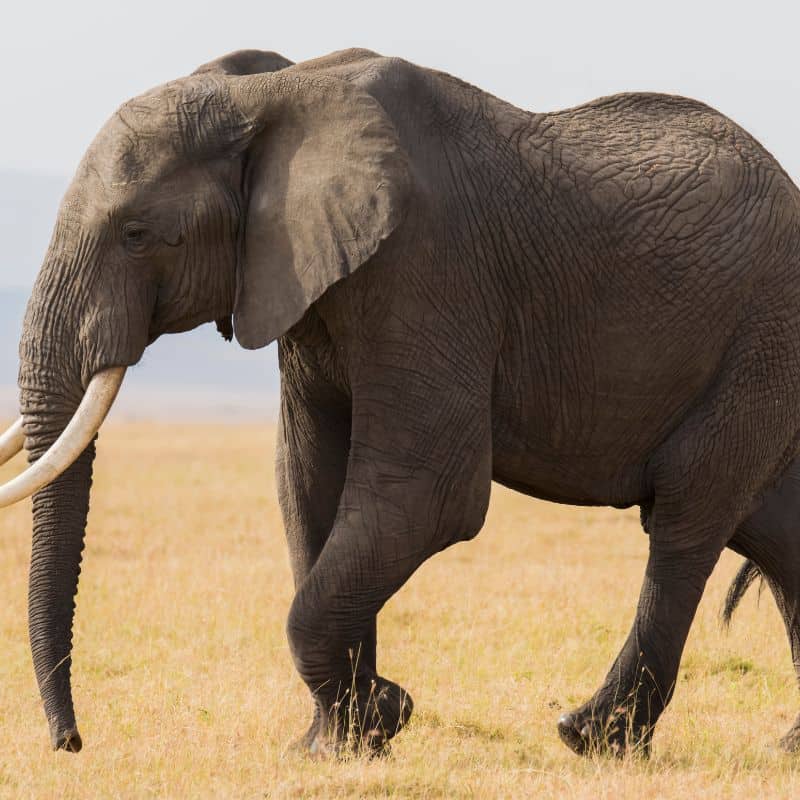
2. African Savanna (Bush) Elephant
The African savanna elephant, also known as the African bush elephant, is the largest terrestrial animal. They are also currently classified as an endangered species because their population is only around 350,000 individuals.
The male elephants, known as bulls, can grow to a magnificent size of almost 13 feet and reach a weight of 11 tonnes.
The African Savanna elephants are found in almost 23 countries on the African continent, and they are capable of living in a multitude of habitats. They can be seen in wetlands to sub-Saharan deserts.
They have some unique characteristics, including having their front legs noticeably longer than their hind legs. Their abnormally large ears are another distinguishable characteristic of them.
Their families and herds are matriarchal, like some other species of animals. They are often found feeding on grass but can also eat fruits, bark, and leaves.
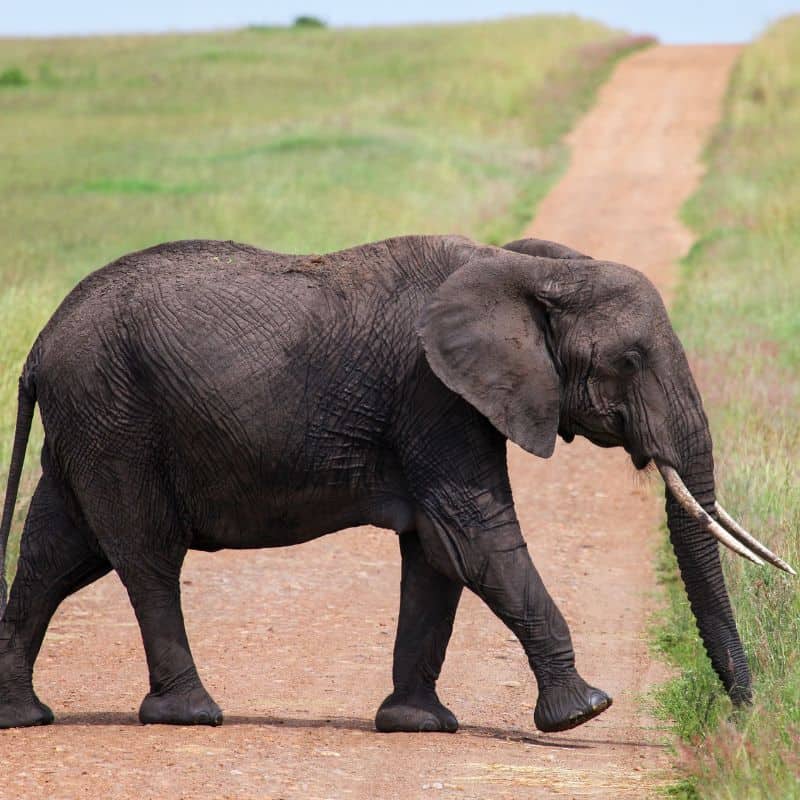
3. Asian Elephants
Each Asian elephant has its own characteristics and habitat influenced by its location.
1. Indian Elephants
The name Indian elephants might suggest that they are restricted to India, but that’s not true. Despite their name, Indian elephants can be found throughout southeast Asia.
However, India hosts the largest population of Indian elephants, having approximately a wild population of 30,000.
The Indian elephants are usually found near a water source. They can feed on a variety of different kinds of food. While they mainly have grass to eat, they can also have leaves, bark, and fruits.
During food store raids, Indian elephants feed on sugarcane, rice, and bananas.
While they are classified as critically endangered, they are still being poached, especially male elephants, for their tusks. Female Asian elephants do not have tusks.

2. Sumatran Elephants
Sumatran elephants are the most severely threatened subspecies of Asian elephants.
They are easily distinguishable compared to their Asian counterparts. They have a lighter skin color and less pigmentation. In addition, they also have much shorter tusks.
Sumatran elephants are essential for conserving the ecosystem since they deposit seeds as they travel. They can feed on several different kinds of plants and leaves.
Despite all the benefits the Sumatran elephant brings to the ecosystem, they continue to be threatened with extinction due to habitat loss. The conversion of forests into agricultural land and human settlements has proven to be devastating for the Sumatran giants.
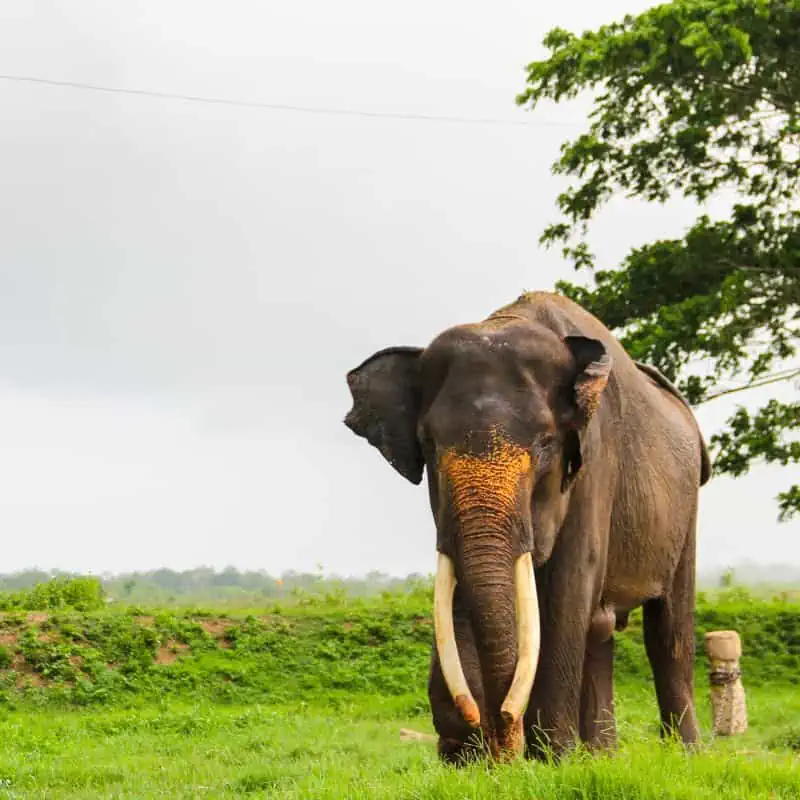
3. Sri Lankan Elephants
The largest among the Asian elephants are the Sri Lankan elephants, the national animal of Sri Lanka. They are usually found in tropical and sub-tropical forests in Sri Lanka.
Sri Lankan elephants are the darkest subspecies of Asian elephants with spots on them of depigmentation, which is unique to their subspecies.
The Sri Lankan elephant subspecies have been pushed into an endangered status, reducing by 65%. Nowadays, killing a Sri Lankan elephant is a criminal offense and holds the death penalty.
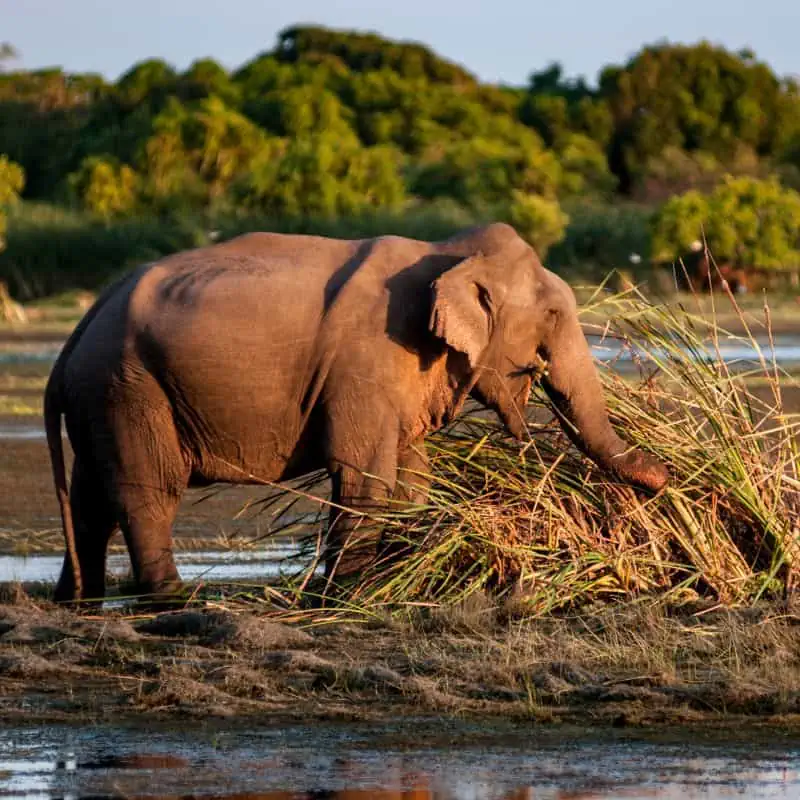
4. Borneo Elephants
The smallest species of Asian elephants, known as the Bornean elephants, are relatively smaller than their mainland counterparts.
The Borneo elephant is also known as the Borneo pygmy elephant due to their small size. They stand at only 8.2-8.8 feet. Despite being the smallest elephant species, the Borneo elephant is the largest species on the Borneo island.
They have some distinct characteristics, such as a long tail that sometimes touches the ground. Having prominent ears and straighter tusks compared to other species of elephants are more distinguishing features.
Scientists believe the Bornean elephants were isolated from their mainland Sumatran cousins some 300,000 years ago.
Are There Any Extinct Elephant Species?
Scientists have predicted that many previous species of elephants have gone extinct for various reasons. Some of these species include the mammoths and ancestors of the bush elephants found in Africa.
Here are two elephant species that have gone extinct!
1. The Woolly Mammoth
The woolly mammoth is a famous extinct animal due to its depiction in popular animated movies such as the Ice Age series.
The woolly mammoth walked the face of Earth some 5 million years ago. The closest living species of elephants to wooly mammoths are the Asian elephants. Woolly mammoths are said to first exist in East Asia.
The Woolly mammoth had a giant size of almost 12 feet and could weigh up to 6 tonnes. Both the male and the female wooly mammoths had tusks.
Scientists have successfully studied the woolly mammoth species due to frozen carcasses in Siberia and North America. The woolly mammoths went extinct due to the Quaternary Extinction Event.
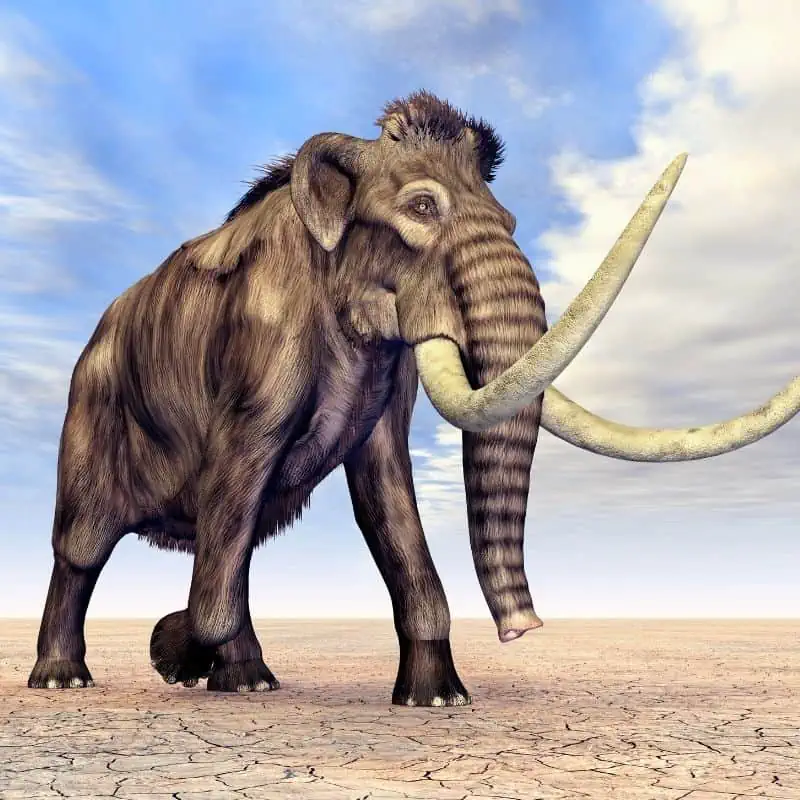
2. Palaeoloxodon Recki
This species of the elephant was the largest elephant that ever walked the Earth. It is estimated that it was approximately 14 feet and could weigh an enormous 12.5 tonnes.
They were a grass-eating species like most elephants left in the world.
Scientists estimate that they lived between 5.33 to 0.011 million years ago.
Since this species was grass-eating, its extinction was related to vegetation. The expansion of cold and frozen grasslands and the contraction of forests are two culprits.
Final Thoughts About Types of Elephants
Elephants are the ecosystem engineers of the world. The footprint of an elephant has the power to start a micro-ecosystem.
Currently, there are three major types of Elephants you can find. These include the African Forest, African Savanna, and Asian Elephants.
Previous species of elephants have gone extinct, so to appreciate the current species in our world entirely, it’s crucial to learn about them.
FAQs
Why Are There Two African Elephants?
The African forest elephants inhabit the dense forests of Central Africa, whereas the African bush elephants are found in the savannas of sub-Saharan Africa. Scientists separated the two species based on appearance and habitats.
Do Asian and African Elephants Look Different?
Scientists have noticed that African elephants have a rounded head shape. Compared to African elephants, Asian elephants have twin-domed heads.
Where Do Most Elephants Die Per Year?
Sri Lankan elephants are the most hunted species. The number of human-elephant conflicts in Sri Lanka is also the highest due to their rapid urbanization.
